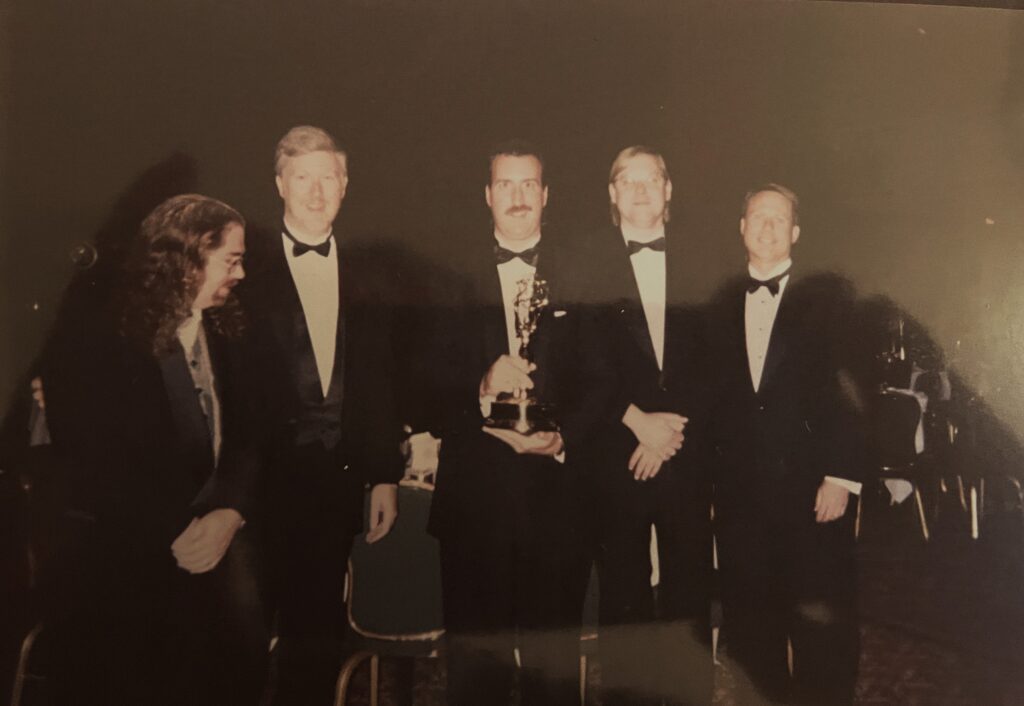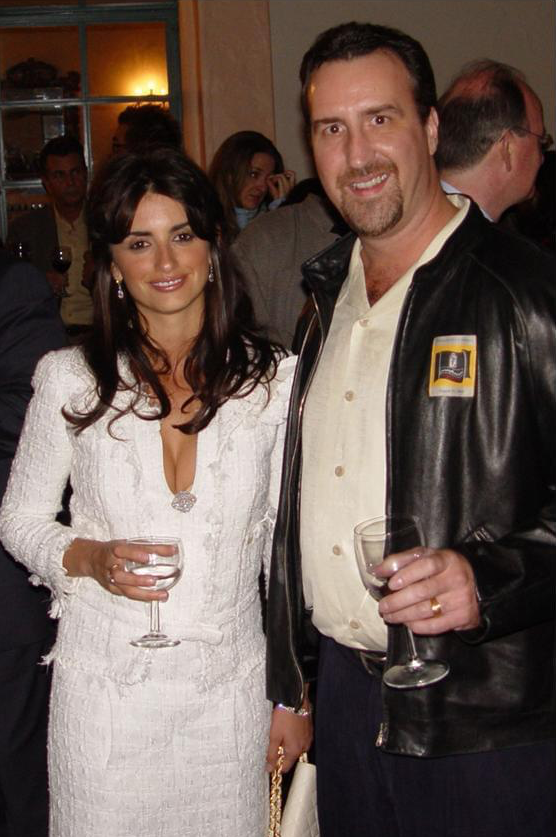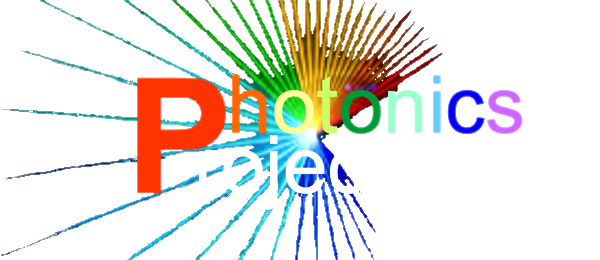| Read our exclusive interview with Paolo Masini, Co-Founder and Technology Advisor of HyperSpectral Corporation. Discover the latest advancements in hyperspectral imaging, AI applications in healthcare, and pathogen detection technology. |
Co-Founder & Technology Advisor HyperSpectral Corporation, Alexandria, VA.
As former CTO, Paolo was responsible for developing and implementing the technological vision and strategy to support the company’s business goals and objectives. He led a diverse technical team including AI/ML software engineers, microbiologists, chemometrician, embedded software engineers, and cloud platform software engineers to develop products that can detect pathogens using spectrophotometers and other spectral sensing devices, and applying AI and preprocessing algorithms to detect the presence or absence of a pathogen within minutes instead of days.

Photonics Project: Paolo, so how’s it going?
Paolo: I’ve been doing well! Hyperspectral has recently completed a Series A financing round, which will help the company launch products in the food safety and human health markets. The platform we have developed has made great progress and is now agnostic to a number of spectral measurement devices allowing a range of options for screening, and can provide results in less than a minute to detect the presence or absence of a specific pathogen that are relevant to these use cases.
Photonics Project: Very glad to hear that! So tell me about your role at HyperSpectral, and what you guys are working on these days.
Paolo: Although I have taken a step back from my CTO role, to now serve as a Technology Advisor for HyperSpectral, there are a number of exciting developments with our recent Series A financing, which is in the neighborhood of $10M. This financing will help HyperSpectral fully develop these pathogen detection platforms for Food Safety and Medical wound care screening, to detect antibiotic resistant strains of bacteria that can cause huge problems in hospital and other settings. We are currently embedded in a Food Safety testing laboratory near Fresno California, testing out our platform in a real-world environment, where early detection of pathogens can be a game changing technology for preventing recalls and outbreaks that we see far too often.
Photonics Project: Yes, I can definitely emphasize. What other projects are going on at Hyper?
Paolo: As I mentioned the two biggest markets we are trying to address with our platform are in the food safety, and clinical human health care markets. We have developed a fast and easy assay sampling method that is specific to each market, (food and environmental samples, wound swabs, etc.) We train our algorithms on real world assays and develop our models to accurately predict the presence or absence of a pathogen. Once our models have been trained and validated the models are hosted in the cloud and any spectral sample can be sent to the cloud to compare with known pathogen spectral signatures. Our platform sends an inference to a web based GUI that gives results for a specific pathogen and in the future, a panel test will be able to detect the presence of a variety of pathogens from a single sample.
Photonics Project: Sounds super impressive! What do you guys have going on in Research and Development?
Paolo: We are maturing our platform and technology and we were recently awarded a DARPA FLEX research project to study the spectral signatures of various materials and substances to detect specific attributes about the material and to tell the difference between real and counterfeit material. We are just getting started on that project, but we think this study could have huge benefits in both military and commercial applications.
Photonics Project: Great stuff, very impressive. And is HyperSpectral your first time working in a start up company?
Paolo: Actually, no its not– good question. Some friends and I started a small business up in the Northern California area after college. We were all from the Bay area and friends with some common interests in the electronics of that day and applications of digital technology to video. So we founded IMIX and wound up developing the industry’s first fully digital online video finisher and mixer. It allowed people to manipulate video in real time, such as during live events or broadcast television programs for instance.
Photonics Project: And how did that work out?
Paolo: Great. The broadcast industry loved it, as it allowed them to pull the video feed over to the side during credits or other downtime and simultaneously put in more advertising around it. So it was a big revenue booster for them. Once it caught on, live entertainment events would use it as well to mix video and do effects like wrap it onto a sphere or cube or any of a number of combinations for fun effects. Some of the biggest acts through the early nineties used it. I personally helped out installations for Tim McGraw and Aerosmith and got VIP passes and watched the show from backstage which was a blast.
Photonics Project: Sounds cool! And I would think the networks would love additional advertising time!
Paolo: Indeed they did. In fact, NBC nominated us for a Technical Emmy – which we won in 1997.
Photonics Project: Congratulations, quite an honor!!
Paolo: Yes we were quite thrilled of course.

Awards Ceremony for Technical Emmy – 1997
Photonics Project: And where did things go from there with ImMIX?
Paolo: We kept developing more powerful devices including the ImMix Turbo Cube which ran on one of the early Macintosh computers. Ultimately, the company was bought out by a larger company. That was initially fine, although they were then bought out by yet another larger company within a few months after that. Then a third buy out, each with new managers and updated visions, with different goals and procedures. At some point it was better to move on and find the next adventure.
Photonics Project: Right. And is that what brought you to the movie collaboration?

Santa Barbara International Film Festival 2004
Paolo: Somewhat. That was a mix of some industry insights, my Italian heritage, and moving to Santa Barbara and meeting up with my good friend Silvio Diloreto who had a TV show “Cooking with Silvio”. He was in the loop on an Italian movie starring Penelope Cruz called “Don’t Move”. The script was set in the Tuscany region where there is a specific Italian dialect, which I speak fluently. So Silvio recommended me, and I became one of Penelope’s accent coaches for the movie. We did a premier at the film festival in Santa Barbara when it came out, and that is where the photo is from.
Photonics Project: Dazzling. OK, and from there?
Paolo: A couple of different jobs and projects, although I have stayed mostly in the realm of electronics, and particularly digital FPGA’s with application to video. I did a stint with Xilinx which helped keep me keep versed in the State of the Art in hardware, while growing their Advanced Video Board segment by almost 3X. My work from there lead me to the collaboration with NASA on camera’s for the THEMIS and the eTHEMIS mission to Europa [editor: a moon of Jupiter which is thought to have liquid water under the surface, potentially able to support simple (Extra Terrestrial) life forms]. I led the engineering teams on the high resolution Infrared Camera System for these missions. The eTHEMIS mission is set to launch from Cape Canaveral in October, and I will hope to be there!

Photonics Project: Quite some interesting stuff! Getting back to Hyperspectral and your plans going forwards, what directions do you see for HyperSpectral and for the industry, especially in terms of AI insertion and impacts?
Paolo: Sure, we have been able to prove that the application of AI/ML techniques onto Spectrally acquired samples can pick out minute differences that through training with our models can improve the accuracy, specificity and sensitivity of the detection of pathogens. One of the biggest challenges is the number of confounders that can make finding a specific pathogen more challenging, but through SNR reduction pre-processing techniques, subtle differences in spectra can be used to make a high confidence inference of the presence or absence of the pathogen. As we develop these algorithms for food safety, and human health applications, we have found that there are a number of applications that could benefit from the use of this technology, but the challenge is to remain focused and to use our Series A funding to get a product to market.
Photonics Project: No doubt, focus on a key market niche will be important. You have had a very diverse career in these technology areas. Was your family background a factor in this choice? Were either of your parents in engineering?
Paolo: Not exactly, although that did come into play. I worked for my dad over the summers at sheet metal and machine shop, and would pick up odd jobs in landscaping and construction from my Dad’s friend who was putting a new driveway in at someone’s home. So first we had to break up the old one. So, my dad dropped me off in the morning with a pick ax and said “See you at lunch”. (laughs)
Photonics Project: Ha ha ha. I bet that was a long morning.
Paolo: Yes, but from there a career in technology was borne! 😊
Photonics Project: OK, let’s talk further about the website tools and any further comments there. Normally we look for a few things that you like, and a few things that you think either need improvement or areas we should expand into.
Paolo: Right, like I said we are making good use of it. I think it is pretty unique as an open free ware tool to learn the basics of infrared detectors and analysis. I also like that the user can dig into the source code on GitHub to start to develop their own tools. A few things I would like to see is the capability that is mentioned to chain the modules together for a full end to end analysis in one run.
Photonics Project: Yes, we have actually just completed that and it will be posted to the GitHub repo by the time this interview is out.
Paolo: Great, we will need to try it out. Beyond that, would there be a way to plot various 1D spectral data, as currently most of our work has been focused on Linear 1D arrays across several spectral bands.
Photonics Project: Noted, we will look into it.
Paolo: We would like to see the modules output CSV files as most of our ingest engines for sending data to the cloud is based on CSV formatted data.
Photonics Project: We need to work on that a bit further. The LOWTRAN tool will do that, but it is hosted on a different server with a fuller python library which is why it takes longer to respond. The server we have for the majority of the tools is optimized for speed and stability to avoid crashes which were an early problem.
Paolo: Another more ambitious goal would be to develop a Hyperspectral imager tool, that would allow you to set spectral region, resolution, etc. That could be quite useful for us in future developments.
Photonics Project: For sure. Well thanks a lot for your time, and good luck with all your endeavors!
Paolo: Thanks for the chat.
Link to Paolo: https://www.linkedin.com/in/paolo-masini-1443153
Link to Hyperspectral: https://www.hyperspectral.ai
